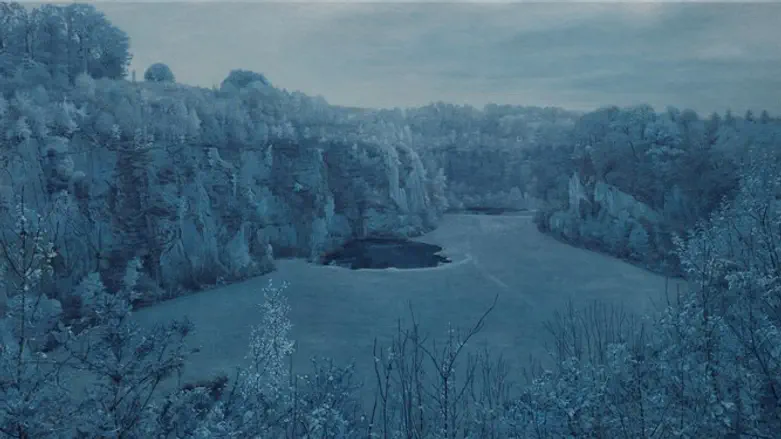
The Mishkan Museum of Art, Ein Harod presents, for the first time in Israel, artist Yishai Jusidman. The showcase, engaging with the question of the Holocaust’s representation in contemporary painting, was previously presented in key venues around the world.
The works in the exhibition are all painted in Prussian blue, a deep blue which was one of the earliest artificial pigments used by European painters. The color is also linked, unexpectedly, to Zyklon B, the pesticide employed in the Nazi gas chambers. It left colored traces on the walls when its lethal compound chemically mutated into Prussian blue residues, some of which are visible to this day, silent and tangible reminders of inconceivable events.
Recapturing excruciating presences and silences, these mesmerizing paintings, which span the gamut between hyper-realism and abstraction, create distance while faithfully representing reality. As a result the viewers are plunge into the labyrinth of historical memory.
There are colors whose historical implications overpower their formal and optical potential. One of them is Prussian blue. Discovered in 1704 in Berlin, it soon became the emblematic tint of the Prussian army and one of the earliest artificial pigments used by European painters. The color is also linked, unexpectedly, to the extermination of European Jewry in World War II.
Yishai Jusidman, a Mexican-born artist who resides in Los Angeles, is one of the key artists pursuing the representation of the Holocaust in contemporary painting. He has a unique way of producing naturalistic depictions that explore visual perception itself and the ethics of representation. His Prussian Blue exhibition will be on view at the Mishkan Museum of Art until July.
Jusidman’s exhibition is devoted to an extremely thorny problem: How can we, or how should we, visualize the Holocaust by way of art? Painting allows the artist to plunge us into the labyrinth of historical memory while the imagery submitted by his brush recaptures both excruciating presences and silences. Prussian Blue (2010–16) confronts the view that the Holocaust cannot be represented, let alone mimetically represented. At the same time, it engages in a dialogue with historical documents and with monuments of a melancholic form of tourism, always skirting our will to see implied in the testimony of an atrocity.
The presentation of this exhibition in Israel, and particularly at the Mishkan Museum of Art, recharges it with further meaning, in light of the extensive part of the Museum’s collection devoted to works by artists who perished in the Holocaust.
